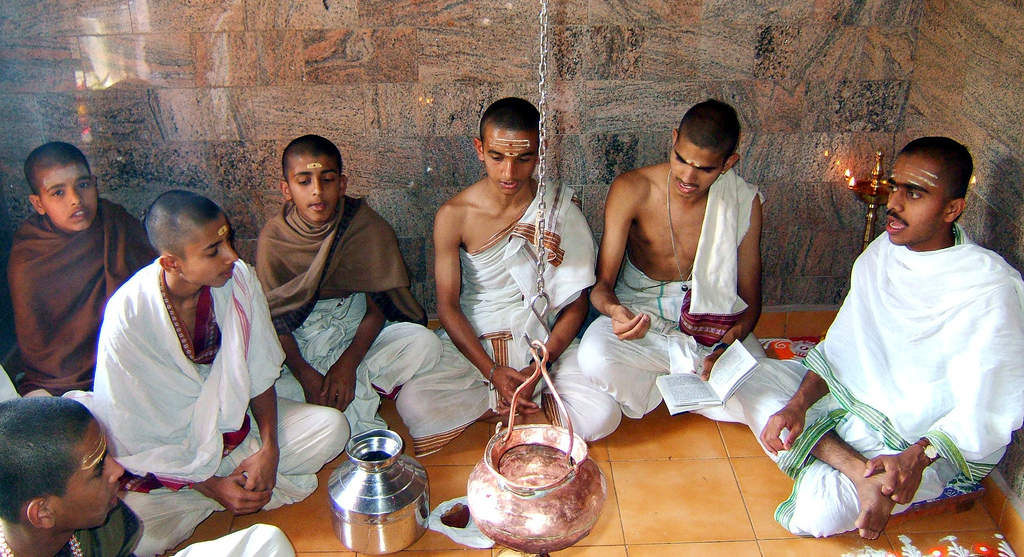4. Globalization, fundamentalism, and maximalism
Globalization
Globalization is about the world becoming larger (because we are aware of events occurring very far away) at the same time as it is also becoming smaller (because we are influenced by what happens very far away, where, previously, only events close by affected us).
Globalization means a renewed focus on values and religion because of an extensive increase in cultural exchanges worldwide. Subsequently, religious people around the world have to deal with the fact that they can now see that their religion is but one of many. Peter Beyer (b. 1949) thinks that faced with globalization, religions actually have but two options: To isolate themselves or actively engage in the new world order. Some religions emphasize their attachment to a local or national level and are highly critical of everything that is not locally or nationally based. Others see the global world as an opportunity and attempts to reach out worldwide. Both approaches, however, have in common that they are responding to globalization. Whether they like it or not, they need to respond.
Examples of religions and religious groups that reject the global aspect are what may be called 'maximalist' religious groups and movements. Many maximalist movements actively work to change society through political action. They find it impossible to make compromises concerning their religion. Therefore, they try to make religion itself the governing political system of society. Where secularism wants to remove religion from politics, maximalists seek the exact opposite. Hence, maximalism can be seen as a reaction to secularization as well as to globalization.
Maximalism can be found in many religions, such as Christianity, Islam, Judaism and Hinduism. Common to maximalists is that they do not perceive religion and politics as separate spheres, and that they try to live their entire lives 24/7 according to their religious prescriptions.
The texts are a rewrite of an English draft version of an introduction to Horisont - a textbook for the Danish upper-secondary school RE, edited by Associate Professors Annika Hvithamar and Tim Jensen, and Upper-Secondary School teachers Allan Ahle and Lene Niebuhr, published by Gyldendal, Copenhagen 2013. The original introduction was written by Annika Hvithamar and Tim Jensen based on a contribution by Peter Lüchau.
Young Hindu boys belonging to the Brahmin caste

Attribution-NonCommercial-NoDerivs 2.0 Generic
https://www.flickr.com/photos/shrimaitreya/339418301/
The caste system in Hindu dominated countries is still widespread despite laws and campaigns pointing in the opposite direction. In many ways, the caste still defines what to work with, who to marry, and whom to befriend. The boys in the picture belong to the Brahmin caste and wear white string around their shoulders as evidence – normally it is concealed under their clothing. The lines on their foreheads symbolize Shiva's trident shows they worship Shiva.
Protestants in parade holding English flags in Belfast, Northern Ireland.

CC BY-SA 3.0
http://upload.wikimedia.org/wikipedia/commons/
Protestants in parade holding English flags in Belfast, Northern Ireland. Northern Ireland Protestants conducts an annual march to commemorate the Battle of Boyne, which marks the Protestant King William of Orange's victory over the Catholic King James II in 1690. The march has repeatedly led to violent clashes between Irish Protestants and Catholics.
FUNDAMENTALISM, MAXIMALISM, AND MINIMALISM
Fundamentalism is a term that originated in the USA in the early 1900s. Christian groups, who wanted to return to the ”fundamentals” of the religion as these 'fundamentals' could be found i the sacred scriptures. wanted society to be arranged according to a (their own) literal interpretation of the Bible. Conservative family values should be encouraged, and children in school should not be taught evolution as taught by Charles Darwin. Fundamentalist groups are still prevalent in the United States. Today, the term is often used about (radical) Islamist groups and has a disparaging ring to it. When working academically with religion, it makes more sense to use Bruce Lincoln’s (b. 1948) concept of “maximalism” and “minimalism”. 'Maximalist religion within the very same religion' denotes groups and individuals who want religion to determine all spheres of society and be decisive for all actions. Religious minimalists, on the contrary, think that religion is or ought be individual, privatized, to be chosen or opted out by the individual and separated from politics. The important point is that one can find minimalists and maximalists within the very same religion. It is not so that one religion is maximalist and another minimalist.
The texts are a rewrite of an English draft version of an introduction to Horisont - a textbook for the Danish upper-secondary school RE, edited by Associate Professors Annika Hvithamar and Tim Jensen, and Upper-Secondary School teachers Allan Ahle and Lene Niebuhr, published by Gyldendal, Copenhagen 2013. The original introduction was written by Annika Hvithamar and Tim Jensen based on a contribution by Peter Lüchau.






